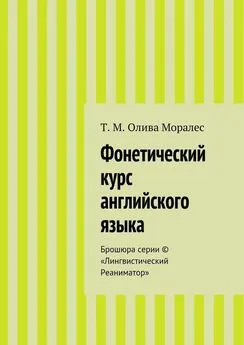Владимир Аракин - Практический курс английского языка 3 курс [calibre 2.43.0]
- Название:Практический курс английского языка 3 курс [calibre 2.43.0]
- Автор:
- Жанр:
- Издательство:ВЛАДОС
- Год:2006
- ISBN:нет данных
- Рейтинг:
- Избранное:Добавить в избранное
-
Отзывы:
-
Ваша оценка:
Владимир Аракин - Практический курс английского языка 3 курс [calibre 2.43.0] краткое содержание
I - V курсов педагогических вузов.
Цель учебника – обучение устной речи на основе развития необходимых автоматизированных речевых навыков, развитие техники чтения, а также навыков письменной речи.
Практический курс английского языка 3 курс [calibre 2.43.0] - читать онлайн бесплатно полную версию (весь текст целиком)
Интервал:
Закладка:
by London art dealers at that time. "Road through Wood, with Boy Resting and Dog", 1747 is a typical 'genre painting', obviously in-
fluenced by Ruisdael. In Many aspects this work recalls Constable's "Cornfield".
In 1750 Gainsborough moved to Ipswich where his professional career began in earnest. He executed a great many small-sized
portraits as well as landscapes of a decorative nature. In October 1759 Gainsborough moved to Bath. In Bath he became a much
sought-after and fashionable artist, portraying the aristocracy, wealthy merchants, artists and men of letters. He no longer produced
small paintings but, in the manner of Van Dyck, turned to full-length, life-size portraits. From 1774 to 1788 (the year of his death)
Gainsborough lived in London where he divided his time between portraits and pictorial compositions, inspired by Geior- gione,
which Reynolds defined as "fancy pictures" ("The Wood Gatherers", 1787). As a self-taught artist, he did not make the traditional
grand tour or the ritual journey to Italy, but relied on his own remarkable instinct in painting.
Gainsborough is famous for the elegance of his portraits and his pictures of women in particular have an extreme delicacy and re-
finement. As a colourist he has had few rivals among English painters. His best works have those delicate brush strokes which are
found in Rubens and Renoir. They are painted in clear and transparent tone, in a colour scheme where blue and green predominate.
The particular discovery of Gainsborough was the creation of a form of art in which the sitters and the background merge into a
single entity. The landscape is not kept in the background, but in most cases man and nature are fused in a single whole through the
atmospheric harmony of mood; he emphasized that the natural background for his characters neither was, nor ought to be, the
drawing-room or a reconstruction of historical events, but the changeable and harmonious manifestations of nature, as revealed both
in the fleeting moment and in the slowly evolving seasons. In the portrait of "Robert Andrews and Mary, His Wife", for example, the
beauty of the green English summer is communicated to the viewer through the sense of well-being and delight which the at-
mosphere visibly creates in the sitters. Gainsborough shows the pleasure of resting on a rustic bench in the cool shade of an oak tree,
while all around the ripe harvest throbs in a hot atmosphere enveloped by a golden light.
Emphasis is nearly always placed on the season in both the landscapes and the portraits, from the time of Gainsborough's ear ly
works until the years of his late maturity: from the burning summer sun in "Robert Andrews and Mary, His Wife" to the early autumn
scene in "The Market Cart", painted in 1786—1787, a work penetrated throughout by the richness and warmth of colour of the
season, by its scents of drenched earth and marshy undergrowth.
It is because his art does not easily fall within a well-defined theoretical system that it became a forerunner of the romantic move-
ment, with its feeling for nature and the uncertainty and anxiety experienced by sensitive men when confronted with nature: "Mary,
Countess Howe" (1765), "The Blue Boy" (1770), "Elizabeth and Mary Linley" (1772), "Mrs. Hamilton Nisbet" (1785).
The marriage portrait "The Morning Walk", painted in 1785, represents the perfection of Gainsborough's later style and goes
beyond portraiture to an ideal conception of dignity and grace in the harmony of landscape and figures.
Gainsborough neither had not desired pupils, but his art — ideologically and technically entirely different from that of his rival
Reynolds — had a considerable influence on the artists of the English school who followed him. The landscapes, especially those of
his late manner, anticipate Constable, the marine paintings, Turner. His output includes about eight hundred portraits and more than
two hundred landscapes.
2. Answer the following questions:
1. How did Gainsborough start his career? 2. What is known about the Ipswich period of his life? 3. What kind of practice did
Gainsborough acquire in Bath? 4. What is a self-taught artist? 5. What do you know about the Flemish tradition (school) of painting?
6. What contribution did Van Dyck make to the English school of painting? 7. What are Rubens and Renoir famous for? 8. Why did
Gainsborough place the sitter in direct contact with the landscape? 9. How is his conception of the relationship between man and
nature reflected in the portrait of "Robert Andrews and Mary, His Wife"? 10. What distinguishes "The Market Cart"? 11. What do
you know about the portrait of Jonathan Buttall ("The Blue Boy")? 12. Who was Sir Joshua Reynolds? What role did he play in the
history of English art? 13. How did Constable and Turner distinguish themselves?
3. Summarize the text in three paragraphs specifying the contribution Gainsborough made to the English arts.
4. Use the Topical Vocabulary in answering the questions:
1.
What service do you think the artist performs for mankind? 2. Historically there have been various reasons for the making of
pictures, apart from the artist's desire to create a work of visual beauty. Can you point out some of them? 3. How does pictorial art
serve as a valuable historical record? What can it preserve for the posterity? 4. There are certain rules of composition tending to give
unity and coherence to the work of art as a whole. Have you ever observed that triangular or pyramidal composition gives the effect
of stability and repose, while a division of the picture space diagonally tends to give breadth and vigour? Be specific. 5. The painter
who knows his own craft and nothing else will turn out to be a very superficial artist. What are some of the qualities a true artist must
possess? 6. Why does it sometimes happen that an artist is not appreciated in his lifetime and yet highly prized by the succeeding
generations? 7. The heyday of the Renaissance is to be placed between the 15th and 16th centuries. Artists began to study anatomy
and the effects of light and shadow, which made their work more life-like. Which great representatives of the period do yoy know? 8.
What national schools of painting are usually distinguished in European art? 9. Classicism attached the main importance to com -
position and figure painting while romanticism laid stress on personal and emotional expression, especially in colour and dramatic
effect. What is typical of realism/impressionism/cubism/expressionism/surrealism? 10. What kinds of pictures are there according to
the artist's theme? 11. Artists can give psychological truth to portraiture not simply by stressing certain main physical features, but by
the subtlety of light and shade. In this respect Rokotov, Lev- itsky and Borovikovsky stand out as unique. Isn't it surprising that they
n/anaged to impart an air of dignity and good breeding to so many of their portraits? 12. Is the figure painter justified in resort ing to
exaggeration and distortion if the effect he has in mind requires it? 13. Landscape is one of the principal means by which artists
express their delight in the visible world. Do we expect topographical accuracy from the landscape painter? 14. What kind of painting
do you prefer? Why?
5. Give a brief talk about an outstanding portrait painter. Choose one you really have a liking for.
6. You are an expert on an outstanding landscape painter. Note down about five pieces of factual information and five pieces of personal
information. Your fellow-students will ask you questions to find out what you know about it.
7. Make a note of the title of the picture that is reasonably well known. Tell the others in the group about the picture. See if they can guess the
title.
8. You are an expert on the Peredvlzhniki/the Society of Travelling Art Exhibitions. Your partner is a foreigner who is completely ignorant of
this period in Russian history.
9. A painting can be studied on several levels and from a variety of perspec tives. Here are a few examples of how pictures can be described,
analyzed, interpreted and evaluated. Use the following texts for making imaginary dialogues about the pictures and act them out in class.
A
"Lady Elizabeth Delme and Her Children" by Reynolds is a typical family group portrait in the Grand Style of English portrait
painting. Lady Delme was the wife of a member of Parliament and belonged to the privileged class of the landed nobility. Here, with
an air of apparently casual informality, she is shown on the terrace before her country-house, while behind stretch the broad acres of
her family estate.
Reynolds has taken care that the gestures, facial expressions, and poses of his subjects are appropriate to their age, character, and
social status. "The joy of a monarch," Dryden once wrote, "for the news of a victory must not be expressed like the ecstasy of a
harlequin on the receipt of a letter from his mistress." So, in this portrait, Lady Delme is dignified and gracious, secure in the
knowledge of her beauty and wealth. Her son John, aged five, as if sensing the responsibilities of manhood, gazes sternly toward the
distant horizon. Her other son, Emelias Henry, in unmasculine skirts as befits his three years, is coy and winsome. The fourth
member of the group, the unkempt Skye terrier, is the embodiment of loyal affection. Note the simplicity of the pyramidal design and
the low-keyed colour scheme. These features were for Reynolds symbols of dignity and good taste.
B
The "Mrs. Sarah Siddons" by Gainsborough has the distinction of being not only a remarkable work of art, but a unique
interpretation of a unique personality. It is not only one of the artist's finest portraits, but also one of the best of the many likenesses
of the great tragic actress, who sat to most of the celebrated masters of her day. It was painted in 1783—1785, when the queen of the
tragic drama was in her twenty-ninth year and at the zenith of her fame.
An enthusiastic admirer who saw it in the Manchester exhibition of 1857 wrote as follows: "The great tragic actress, who inter-
preted the passions with such energy and such feeling, and who felt them so strongly herself, is better portrayed in this simple half-
length in her day dress, than in allegorical portraits as the Tragic Muse or in character parts. This portrait is so original, so individu al,
as a poetic expression of character, as a deliberate selection of pose, as bold colour and free handling, that it is like the work of no
other painter.
C
"Dedham Lock and Mill" (1820)
This is a brilliant example of Constable's view painting at its complete maturity. The salient features of the landscape are treated in
sharp relief— even those not strictly necessary— yet they merge perfectly under a serene, perfect light. This painting contains, in
synthesis, all the elements of landscape which Constable loved best: the river, the boats, the soaked logs, the river vegetation, the sun
shining through the foliage of the tall trees, the scenes of rural life and, above all, Dedham Mill. The cultural origins of this work are
apparent in the traditional composition, in the use of chiaroscuro, in the way the landscape fades into the distance, after the Dutch
Читать дальшеИнтервал:
Закладка:
![Обложка книги Владимир Аракин - Практический курс английского языка 3 курс [calibre 2.43.0]](/books/1072035/vladimir-arakin-prakticheskij-kurs-anglijskogo-yazyk.webp)









